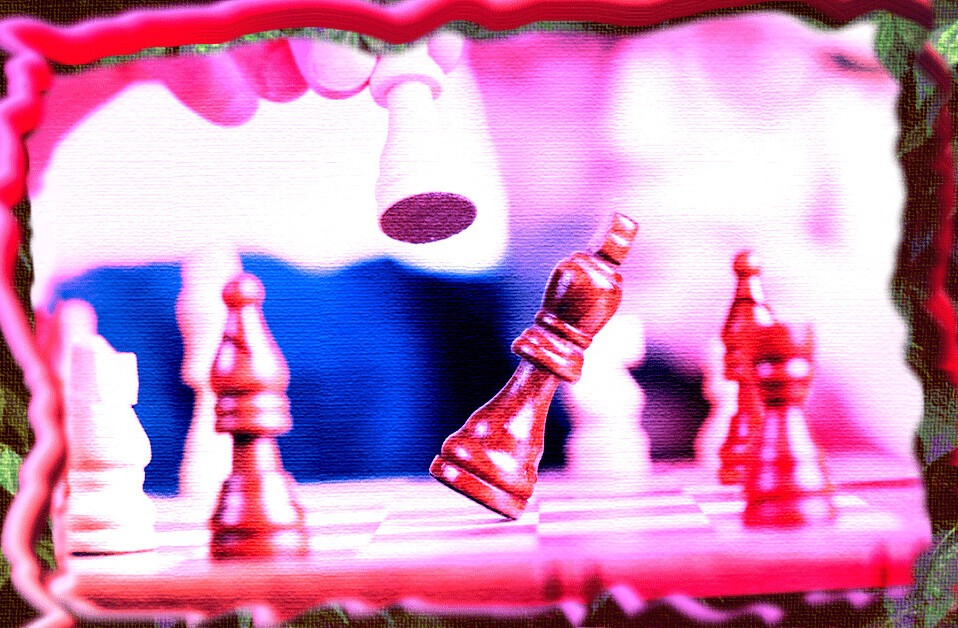
A team of researchers recently published a study on bisexual men that, surprisingly, indicates they exist. This comes as a shock because the lead researcher, Professor J. Michael Bailey of Northwestern University, previously determined that bisexual men were, more-or-less, just confused gays or straights. I’m paraphrasing, what that paper, published in 2005, really said was:
Male bisexuality appears primarily to represent a style of interpreting or reporting sexual arousal rather than a distinct pattern of genital sexual arousal.
In other words, the researchers questioned the existence of male bisexuality by claiming that sexuality was determined by arousal. And, according to the paper, the amount of arousal generated by people conforming to one of two binary gender constructs was the primary determining factor in a person’s sexual orientation.
[Read: Why queer representation is so important in STEM]
There’s a lot wrong with this. It denies the existence of people on the asexual spectrum – a percentage of the population estimated to be roughly equal to the number of people who self-identify as bisexual. And it assumes that sexual attraction is always expressed through genital arousal. More on that later.
The new study, which came out earlier this week, used a gadget that sounds a lot like a sphygmomanometer (blood-pressure checker) for penises, to determine if bisexual men experienced “arousal” in equal amounts for “both” genders.
Apparently, these scientists operate under the assumption that the penis knows more about the person than the person. Here’s a snippet from their paper:
One promising approach to empirical verification of self-reported male bisexuality as an orientation uses penile plethysmography (i.e., a strain gauge around the penis) to study genital sexual arousal patterns to erotic stimuli featuring men or women (but not both). Examples of stimuli used in these studies include videos of sexual interactions between actors or of solitary actors masturbating.
Such an approach has several advantages: It relies on physiological processes rather than self-report; it is difficult to consciously manipulate; and, for men, sexual arousal to attractive women or men is arguably equivalent to sexual orientation. This approach has been used in a handful of studies focusing on male bisexuality with mixed results. Some studies failed to provide evidence that bisexual-identified men had bisexual arousal patterns.
There are many problems with the above statements. Firstly, “and, for men, sexual arousal to attractive women or men is arguably equivalent to sexual orientation,” is the opposite of evidence. The authors even cite their own previous work as the argument here. Let’s break down all the reasons why this sentence is problematic:
- It assumes a general standard of attractive
- It assumes men are generally aroused by pornography
- It assumes sexual arousal is the result of visual exposure to sexual acts
These points may make sense on the surface. But only if we concede that most men enjoy porn, and even if we do: bisexuals aren’t most men.
It’s estimated that less than three percent of the population identifies as bisexual – it takes an incredible leap of academic self-confidence to assume every bisexual man experiences sexual excitement, arousal, and attraction the same way.
The researchers excluded men who self-identify as bisexual but didn’t experience erection activity while watching pornography featuring men or women (never both) participating in “male-male” or “female-female” sex acts or masturbating.
To sum up: In order to prove they exist for the purposes of this study conducted in 2020, a bisexual man has to be able to display an erection to a team of researchers twice, in equal amounts of girth, while viewing separate pornographic depictions of men masturbating or having sex with men and women masturbating or having sex with women. And all of this while their penis is strapped in to a “strain gauge.”
Here’s a study on erectile dysfunction that might be useful. Anecdotally, as a person with more than four decades of experience having a penis, I can assure you that their level of flaccidity isn’t always an indication of their owner’s arousal. Most men experience involuntary erections without sexual arousal and sexual arousal without erection (which is literally so common it’s a cliche`: ” I’m sorry, this has never happened to me before”).
Alternately, the same lead researcher conceded that women were probably bisexual a decade ago, even going so far as to postulate that women had no sexual orientation. Per that paper:
There is an emerging consensus that women’s sexual partner choices are sometimes made for different reasons than men’s. For example, women are thought to have greater erotic plasticity than men, meaning that their sexual behavior is more apt to be shaped by sociocultural factors (Baumeister). Furthermore, women’s sexual desire may be more “fluid” than men’s, less rigidly directed toward persons of a particular sex and more changeable over time, depending on relational factors such as romantic attachment (Diamond, 2008).
In other words: men’s sexual orientation is the mindless result of their sexual urges and women’s is defined by what society tells them it is.
Both of these stereotypes are hysterically outdated and ridiculous. With one hand they use physiological response as a method of “measuring bisexuality” in men, with the other they dismiss the same evidence in women because… apparently you can’t trust a woman’s body the same way you can a man’s? This, despite modern research indicating the gendered brain is a myth.
No wonder the team is incapable of understanding bisexual men or women, they’re approaching the problem as though it’s a mating issue between laboratory mice outliers.
Many modern experts agree that human sexuality isn’t actually defined by the Kinsey-scale, nor by the nonsensical measure of penis-circumference-expansion during exposure to queer and solo porn.
Sapiosexuals (those who experience sexual arousal when exposed to intelligence), pansexuals (those who don’t use gender identity as a determining factor in who they’re sexually interested in), and demisexuals (those who only experience sexual attraction to people they have an emotional bond with) all exist. And so do myriad other sexual identities. And while homo, hetero, and bisexuality may be the most well-known, they’re certainly not the only ones.
This study did not illuminate, explain, or determine anything about bisexuals. What it did determine is that if you scale a sexuality study large enough you can generate whatever data you want. In this case, the team learned that some bisexual men get erect when they watch random porn. We didn’t need academia to tell us that.
The bottom line: This study is a joke at best. It only accounts for men who get aroused by queer/solo porn. The majority of its citations refer to previous work conducted by its own authors. The only useful purpose it serves is to contradict that previous research. Now, when bigots attempt to cite the 2005 study as “proof” that bisexual men are either confused or lying, we’ll be able to point out the author updated their own work to admit it was incorrect.
Otherwise, this research contributes absolutely nothing to the modern understanding of human sexuality that no longer treats binary, static sexual identity as the default. Welcome to the present.
Get the TNW newsletter
Get the most important tech news in your inbox each week.




